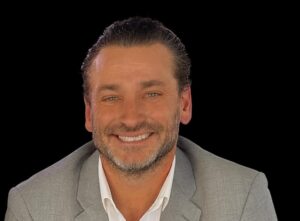American cities are feeling the weight of stalled development and aging infrastructure. The American Society of Civil Engineers estimates the national infrastructure gap for the next 10 years at around $3.7 trillion, a shortfall that impacts productivity, housing availability, and the country’s ability to compete with fast-growing global hubs. Places like Dubai and Singapore have shown how bold design paired with coordinated investment can transform entire economies. The U.S. has the talent and capital, but it needs leaders who can connect the dots. Mohamed Elsayed, a strategic partner to venture capitalists with experience across more than $100 billion in global developments, believes he can help fill that gap.
Elsayed’s worldview was shaped by years spent studying cities that reinvented themselves through design. He shared, “I’ve always been inspired by visionary leaders, the kind of people who see possibility where others see limits.” That early pull toward architecture eventually turned into a career at the crossroads of real estate, capital strategy, and national identity. His time across multiple cultures showed him how the built environment can shift a city’s mood, influence how people move through it, and shape the way outsiders judge its potential. Dubai, in particular, became a kind of classroom for him. As he put it, “My travels through cities around the world taught me that architecture, when done with purpose, can transform everything around it.” That belief fuels the work he hopes will help America regain its competitive edge.
The work he focuses on now blends ultra-luxury towers, major mixed-use districts, and data center infrastructure. Elsayed looks for locations with untapped potential, then finds ways in which design can lift the entire area. That means world-class architects, cutting-edge engineering, and a financial structure that attracts global capital. His background in high-scale banking highlights his unique, strategic vision. “Strong ideas only succeed with solid economics,” said Elsayed. It’s a principle he repeats often because, in his view, vision without rigor produces buildings instead of legacies.
Ultra-luxury projects are often misunderstood as vanity efforts for wealthy buyers, but Elsayed argues they can change the energy of an entire neighborhood. When a landmark rises, it attracts restaurants, retail, entertainment, and a steady stream of visitors. The ripple effect kicks in quickly. A single project can create hundreds of construction jobs, dozens of long-term roles in hospitality and operations, and millions in annual economic activity. In cities like Miami or Las Vegas, where tourism is oxygen, a new draw can lift entire submarkets. That matters when local governments are fighting for both tax revenue and new industries.
He applies the same logic to data centers, which he sees as the backbone of the country’s digital future. America’s demand for computing power is exploding, driven by AI, cloud services, and media streaming. Each center can require investments in the billions and support thousands of specialized roles across engineering, maintenance, and operations. This is critical infrastructure that determines whether the U.S. remains a leader in innovation or falls behind rising economies that are building aggressively in this space.
Elsayed’s upcoming mixed-use projects that blend residential, hospitality, and retail, along with tech infrastructure developments, are the gamechangers that can anchor a city’s future for decades. When something like this comes to life in a market like New York, Miami, or Las Vegas, the effect goes far beyond the neighborhood. It pulls in foreign capital, brings in global talent, and sends a clear message that the U.S. can still deliver the kind of ambitious, skyline-shaping architecture that turns heads around the world.
He spends a lot of time on-site before a project begins, walking neighborhoods to get a feel for what people actually need. Sometimes that means new housing, other times it’s a development that gives a district a clearer sense of identity. Every American city has its own pulse. New York has precision, Miami has its openness, and Las Vegas has its appetite for spectacle. Elsayed designs around those personalities instead of forcing a single global template onto places that deserve their own voice.
Our population is growing, infrastructure is aging, and global competitors are building at speeds America hasn’t matched in years. Elsayed’s work aims to change that trajectory by mobilizing international investment, raising architectural standards, and delivering landmark projects that create jobs and strengthen local economies. If America wants to strengthen its position as a place where bold ideas shape skylines and drive growth, it needs builders who think at this scale. Elsayed is betting that his vision can help get it there.








